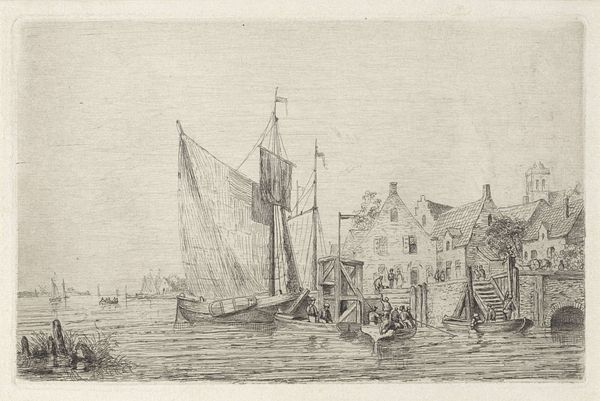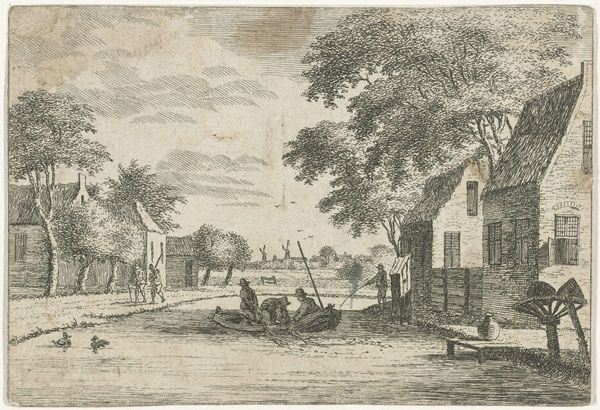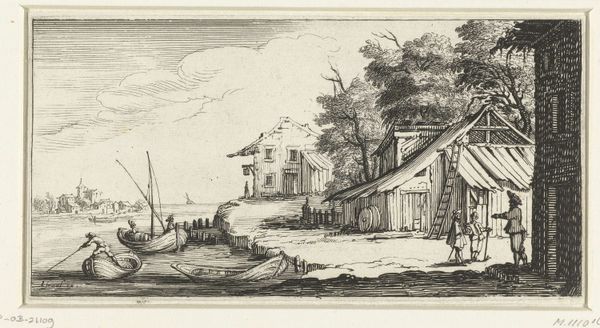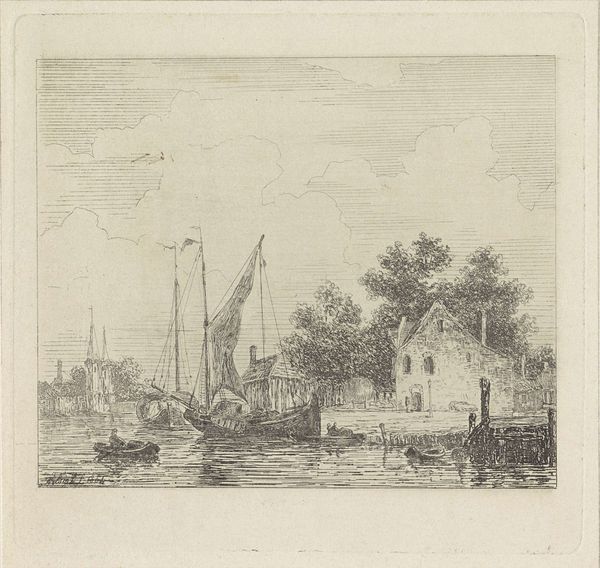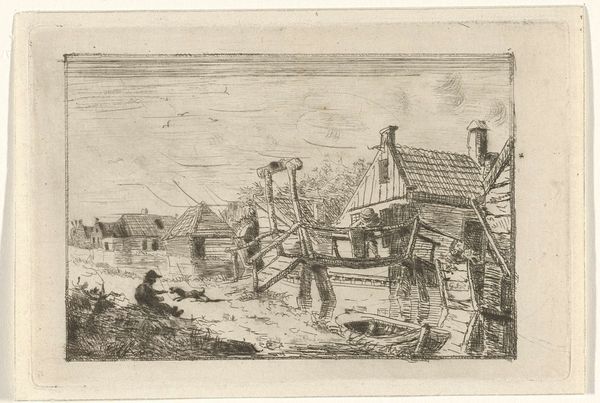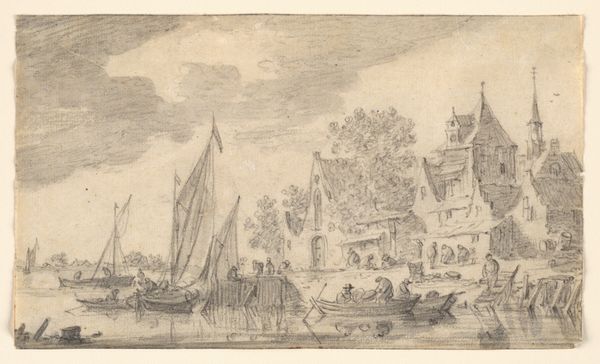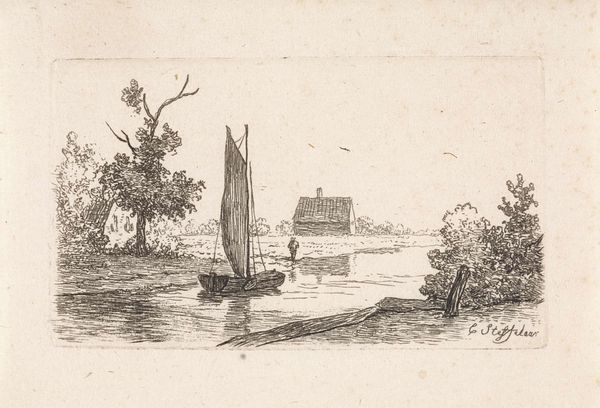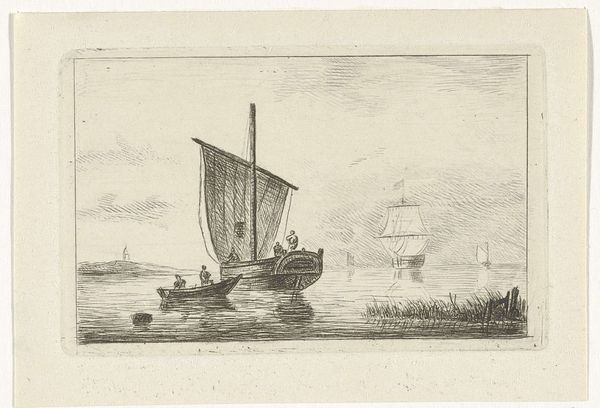
drawing, ink, pen
#
drawing
#
dutch-golden-age
#
pen sketch
#
pencil sketch
#
landscape
#
etching
#
ink
#
pen-ink sketch
#
pen
#
genre-painting
Dimensions: height 167 mm, width 269 mm
Copyright: Rijks Museum: Open Domain
Editor: This is "Riviergezicht," or "River View," by Hendrik Spilman, made sometime between 1731 and 1784. It’s a pen and ink drawing, and it feels very…everyday. A snapshot of Dutch Golden Age life. What strikes you about this piece? Curator: It's precisely that "everydayness" that makes it compelling. The Dutch Golden Age witnessed the rise of a mercantile class, and with it, a demand for art that reflected their own lives and landscapes, rather than solely religious or aristocratic themes. What seems like a simple river view is, in fact, a statement of cultural identity and burgeoning national pride. Consider where art was shown: not just in palaces, but increasingly in homes, taverns, and public exhibitions. Editor: So, this isn’t just a pretty picture, but a reflection of societal shifts? Curator: Absolutely. Think about the function of images. What are people *doing* in them? Who gets depicted and why? These drawings circulated within a developing art market, fostering new artistic careers and influencing public taste. Artists like Spilman responded to and shaped this dynamic, contributing to a visual language that celebrated Dutch ingenuity and prosperity. What elements do you think reinforce that image? Editor: Well, the busy river suggests trade and transport, and the solid, well-kept house implies wealth. There's also a general sense of industry; it’s a working landscape. Curator: Exactly. And that idealization, that sense of order and control over the natural world, was a key element of the Dutch self-image at the time. It highlights not just wealth but how wealth is constructed, both literally and figuratively. Looking at this piece has reminded me that art, like any document, needs to be understood within its historical, economic and social context. Editor: That's a powerful reminder. I’ll never look at a “simple” landscape the same way again!
Comments
No comments
Be the first to comment and join the conversation on the ultimate creative platform.


